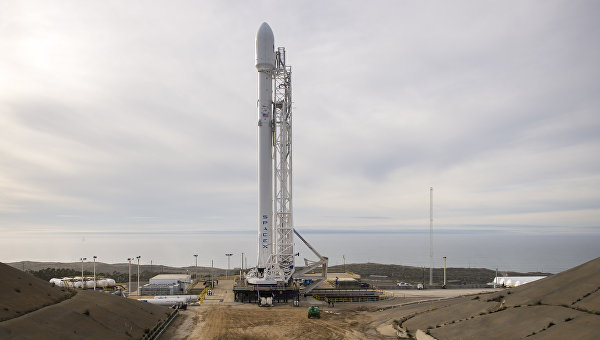Falcon 9 launch canceled for the third time

AP Photo / NASA / Bill Ingalls The
launch of the SpaceX Falcon 9 booster with a geostationary satellite on board has been postponed for the third time. The company says in its Twitter account that the launch was stopped for technical reasons. Only a few seconds remained before the start, as the control center issued a command to abort the launch.
It is also reported that the booster was not damaged. The new launch date is still unknown, it should be announced later.
The first planned launch was canceled due to weather, due to bad weather conditions, it was decided not to launch the rocket.
Team opting to hold launch for today. Looking to try again tomorrow; window also opens at 6:46 pm ET. Rocket and spacecraft remain healthy.
- SpaceX (@SpaceX) February 24, 2016
The second time the start was canceled due to technical reasons: unforeseen problems arose with highly cooled oxygen .
Countdown held for the day. Teams are reviewing the data and next available launch date.
- SpaceX (@SpaceX) February 26, 2016
And the third time the reason is the same - problems arose with chilled oxygen. True, the initial problem now is the boat in the launch sector. Due to the wait, the oxygen temperature increased, a helium bubble appeared, which caused a malfunction .
@SpaceX Launch aborted on low thrust alarm. Rising oxygen temps due to hold for boat and helium bubble triggered alarm.
- Elon Musk (@elonmusk) February 29, 2016
We hope that the fourth launch will not be canceled, the SES-9 communications satellite will be put into geostationary orbit, and the first stage will be put on the offshore platform “Of Course I Still Love You”. In order for the spacecraft to be delivered into such a high orbit, the carrier will have to spend more fuel to achieve extra speed. There may not be enough fuel to land. The company's specialists have already said that despite the expected failure when landing the first stage on the barge, the data obtained during the landing will allow engineers to improve the design of the rocket.
